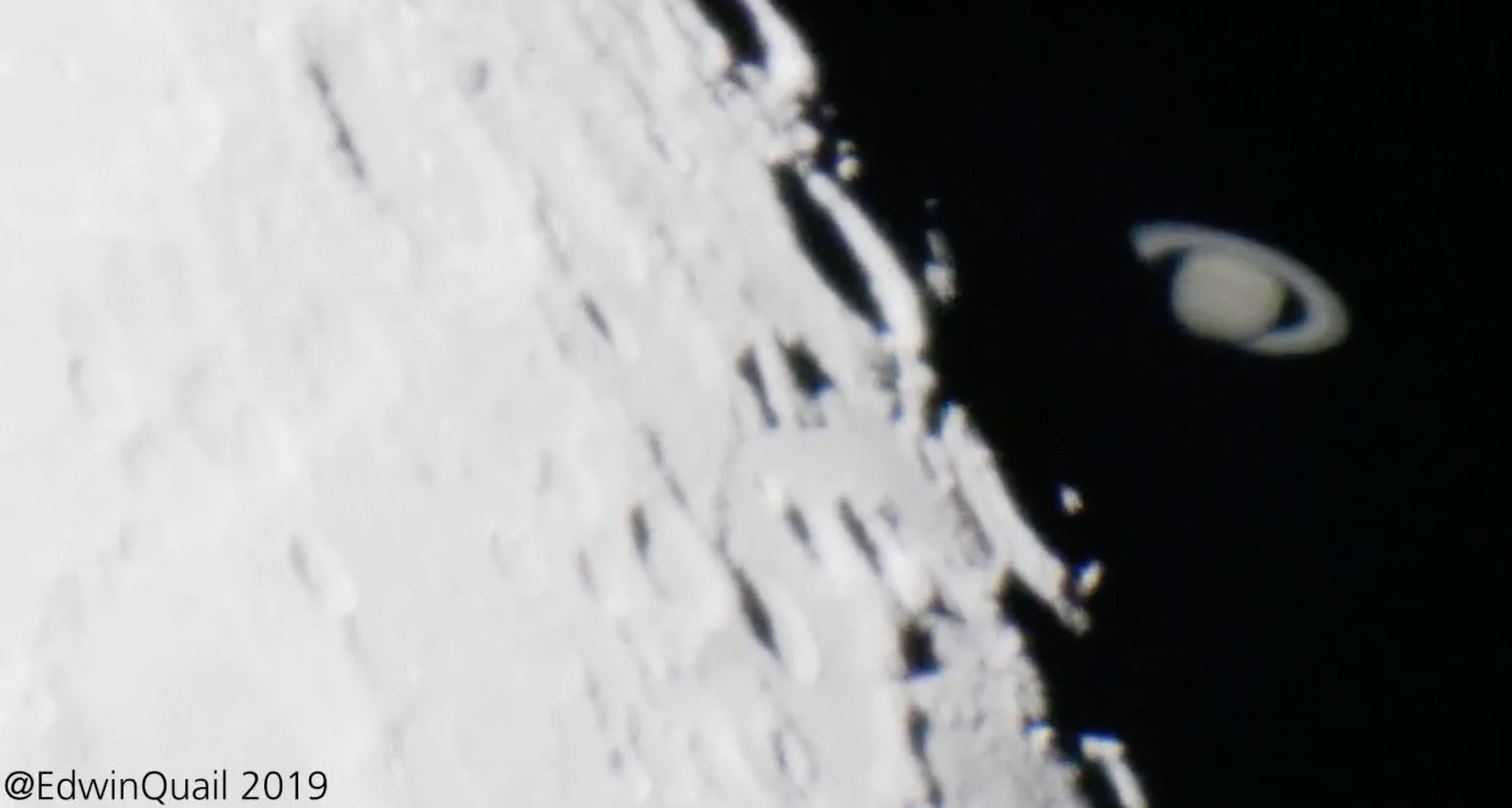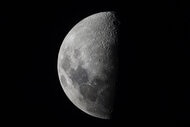Create a free profile to get unlimited access to exclusive videos, sweepstakes, and more!
The Day the Moon ate Saturn

The solar system is flat! Kinda.
Most of the planets orbit in the same plane; if you took a rocket and went, oh, 10 billion kilometers away in the right direction you'd see all the planets' orbits are nearly aligned, flat. If you sat there and waited, they'd look like they were in a line, moving back and forth as they orbited the Sun.
Except … that alignment isn't exact. They each have their own orbital inclination, or tilt. We say the Earth's is 0 by definition (it's also the same as the Sun's path around the sky every year, since that's literally a reflection of Earth's orbital motion; we call that line in the sky the ecliptic), but the others tilt by a few degrees from that.
Our Moon's orbit is tilted with respect to the ecliptic, too, by about 5 degrees. That's not much, but the Moon is about 0.5° in size on the sky. Its orbital tilt is 10 times its apparent size! So even though a star might be exactly on the ecliptic in the sky, the Moon might only rarely pass directly in front of it. When it happens it's called an occultation.
It's worse for planets, since they're tilted too. The Moon occulting a planet is rare indeed. But it does happen, and when it does it's very very cool.
Australian astronomer Edwin Quail saw that the Moon was due to pass in front of Saturn from Sydney on August 12, 2019, just after sunset. He was ready for it. Using a Celestron 24-cm 'scope and a video camera, he was able to catch the Moon occulting Saturn!
Whoaaaaa.
You can see the craters on the Moon near the edge, some with their rims and hills poking up into the sunlight. And, of course, there's Saturn. If you look closely, you can even see the Cassini Division, a dark gap near the outer edge of Saturn's rings. At that magnification the atmosphere is pretty unstable, so you also see everything "boiling." But that doesn't take away from this; I love how Saturn starts to disappear before you think it should, because the Moon isn't quite full. It was about 91% illuminated, so there's a sliver of dark Moon there, and that's what Saturn slips behind.
Quail was also patient enough to wait almost an hour for Saturn to re-emerge. He caught that on video, too:
Saturnrise! This time, it reappears from the lit side of the Moon.
But wait! There's more!
Saturn has lots of moons, and with a 'scope that size many are visible. However, with a nearly full Moon literally right next to them most are washed out. Still, he was able to catch Titan — the second-largest moon in the solar system and visible with binoculars — as it went behind the Moon, preceding Saturn. He had to set his camera so that the Moon and Saturn were vastly overexposed, but Titan can be seen:
Titan is the little "star" close to the Moon. I love how you can see the hilltops high enough to still be in sunlight look like they're floating above the Moon, and how Saturn is just a blown-out ellipse due to the rings. Oh — that big blue ring is due to reflections inside the telescope. It's always there, but faint, so it's usually invisible, and only seen here due to the hugely overexposed video.
You can tell from the angle that Saturn cut a chord behind the Moon, a shallow line (if it had cut straight through the middle that would be the maximum amount of occultation you can get). As it happens, the Moon is close enough to us that an observer at a different latitude would see Saturn intersect the Moon at a different spot on the Moon's face due to parallax. This one was such a shallow chord that from my location in the U.S., roughly 80° north of where Quail was, the Moon missed Saturn entirely! It wasn't even close; the Moon passed over a degree from Saturn. So it's not just a matter of being ready at the right time, you have to be at the right place, too.
I've seen a few occultations before, but never one like this. Someday … the International Occultation Timing Association has a list of upcoming ones. I'm out of luck for this year. If you're curious, you can download some free software that will predict them for you. I may give that a go. I haven't taken my 'scope out in a while (in Colorado where I am, the two seasons of the year are mosquitos and freeze-body-parts-off; the intervals between them are short), so it'd be nice to have an excuse to do so.
One final note: Quail is on Twitter, and I thank him personally for graciously putting those videos up on YouTube so I could embed them.














